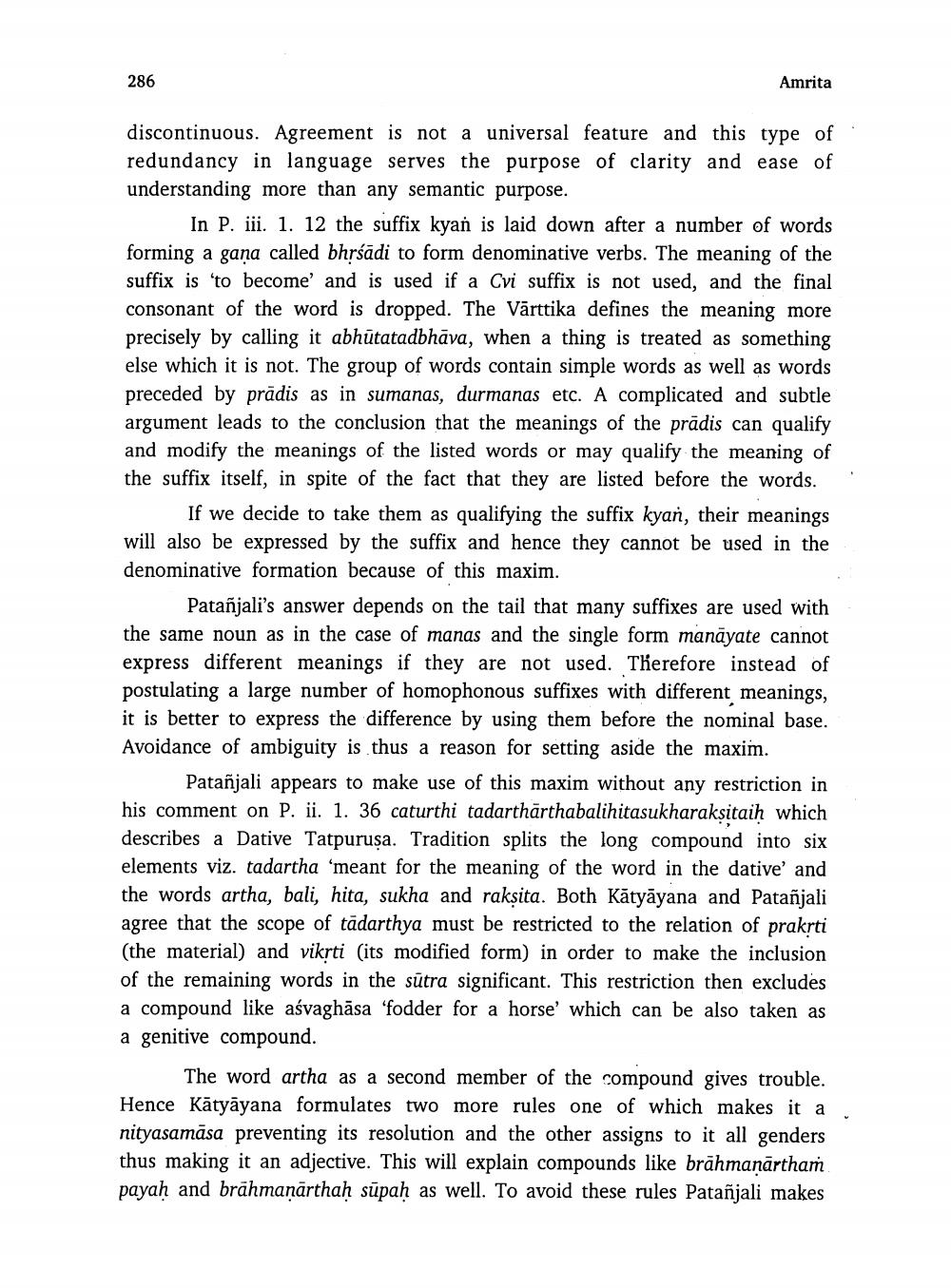________________
286
Amrita
discontinuous. Agreement is not a universal feature and this type of redundancy in language serves the purpose of clarity and ease of understanding more than any semantic purpose.
In P. iii. 1. 12 the suffix kyan is laid down after a number of words forming a gana called bhrśādi to form denominative verbs. The meaning of the suffix is 'to become and is used if a Cvi suffix is not used, and the final consonant of the word is dropped. The Vārttika defines the meaning more precisely by calling it abhūtatadbhāva, when a thing is treated as something else which it is not. The group of words contain simple words as well as words preceded by prādis as in sumanas, durmanas etc. A complicated and subtle argument leads to the conclusion that the meanings of the prādis can qualify and modify the meanings of the listed words or may qualify the meaning of the suffix itself, in spite of the fact that they are listed before the words.
If we decide to take them as qualifying the suffix kyan, their meanings will also be expressed by the suffix and hence they cannot be used in the denominative formation because of this maxim.
Patañjali's answer depends on the tail that many suffixes are used with the same noun as in the case of manas and the single form manāyate cannot express different meanings if they are not used. Therefore instead of postulating a large number of homophonous suffixes with different meanings, it is better to express the difference by using them before the nominal base. Avoidance of ambiguity is thus a reason for setting aside the maxim.
Patañjali appears to make use of this maxim without any restriction in his comment on P. ii. 1. 36 caturthi tadarthārthabalihitasukharaksitaih which describes a Dative Tatpurusa. Tradition splits the long compound into six elements viz. tadartha 'meant for the meaning of the word in the dative' and the words artha, bali, hita, sukha and rakṣita. Both Kātyāyana and Patañjali agree that the scope of tādarthya must be restricted to the relation of prakrti (the material) and vikrti (its modified form) in order to make the inclusion of the remaining words in the sūtra significant. This restriction then excludes a compound like aśvaghāsa 'fodder for a horse' which can be also taken as a genitive compound.
The word artha as a second member of the compound gives trouble. Hence Kātyāyana formulates two more rules one of which makes it a nityasamāsa preventing its resolution and the other assigns to it all genders thus making it an adjective. This will explain compounds like brāhmanārtham payah and brāhmanārthah sūpah as well. To avoid these rules Patañjali makes




